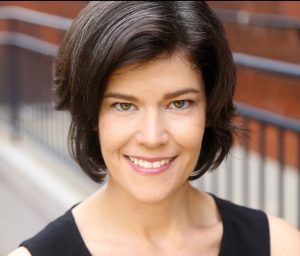
(1) How can we find out how the brain works?
It all begins with thoughtful descriptions of the computations that the brain solves, which are often directly reflected in behavior. Ultimately, a description of “how” is formalized by a model that provides a non-trivial account of data. Crucially, while many of us have been taught that the ultimate test of understanding something is to build it, recent work in our field highlights that you can build something without deeply understanding how it works. Model interpretability is one of the biggest challenges that we currently face.
(2) What will your talk at CCN 2017 be about?
Single-trial visual memory. I am fascinated by our remarkable ability to remember the objects and scenes that we have encountered previously, after viewing thousands of images, and by the fact that we remember these images with considerable detail. How do our brains manage this? This question is an excellent case study for CCN, because its answer is interesting at so many different levels. Algorithmically – what are the learning rules responsible for visual memory storage and how does the brain manage perceptual stability in the face of single-trial plasticity? Theoretically – what is a memory tag that indicates “I’ve seen this before” useful for? And is it a natural byproduct of a system optimized to predict? And biophysically – while I’ve never really been drawn toward detailed biophysical descriptions of information processing (e.g. visual processing), I find them much more compelling when contemplating memory. In the case of information processing, spikes are the primary currency, and it is thus useful to discuss how abstract quantities such as ‘signals’ are transformed as information propagates from one stage to the next. In the case of information storage, spikes can signal memory recollection, but spikes are not themselves the memory.
(3) How can cognitive science, computational neuroscience, and artificial intelligence best work together?
One of the most important factors is clear communication – we all work with sophisticated and complex ideas, and if I can’t understand what you are talking about, I can’t adopt what you have figured out. We all need to invest time and energy into the explanation as well as the discovery. Interdisciplinary meetings – like CCN! – facilitate this. As does cross-field collaboration, whether it’s writing a review article or co-mentoring a trainee.
(4) What current developments are you most excited about?
New developments in biotechnology that allow us to monitor and manipulate neural activity in incredibly specific ways (e.g. optogenetics). These tools are revolutionizing our field, because they allow for causal tests of our descriptions of neural computation like never before. For example, these tools have been used in mice to tag the specific subpopulations of neurons activated during memory formation such that those neurons can be perturbed in purposeful ways later on.
(5) What do you hope to learn at CCN 2017?
At any meeting, I am usually most excited to discover great work that I was previously unaware of. Given the convergence of different fields at CCN, I am looking forward to learning about new ideas and approaches that I currently know little about.
